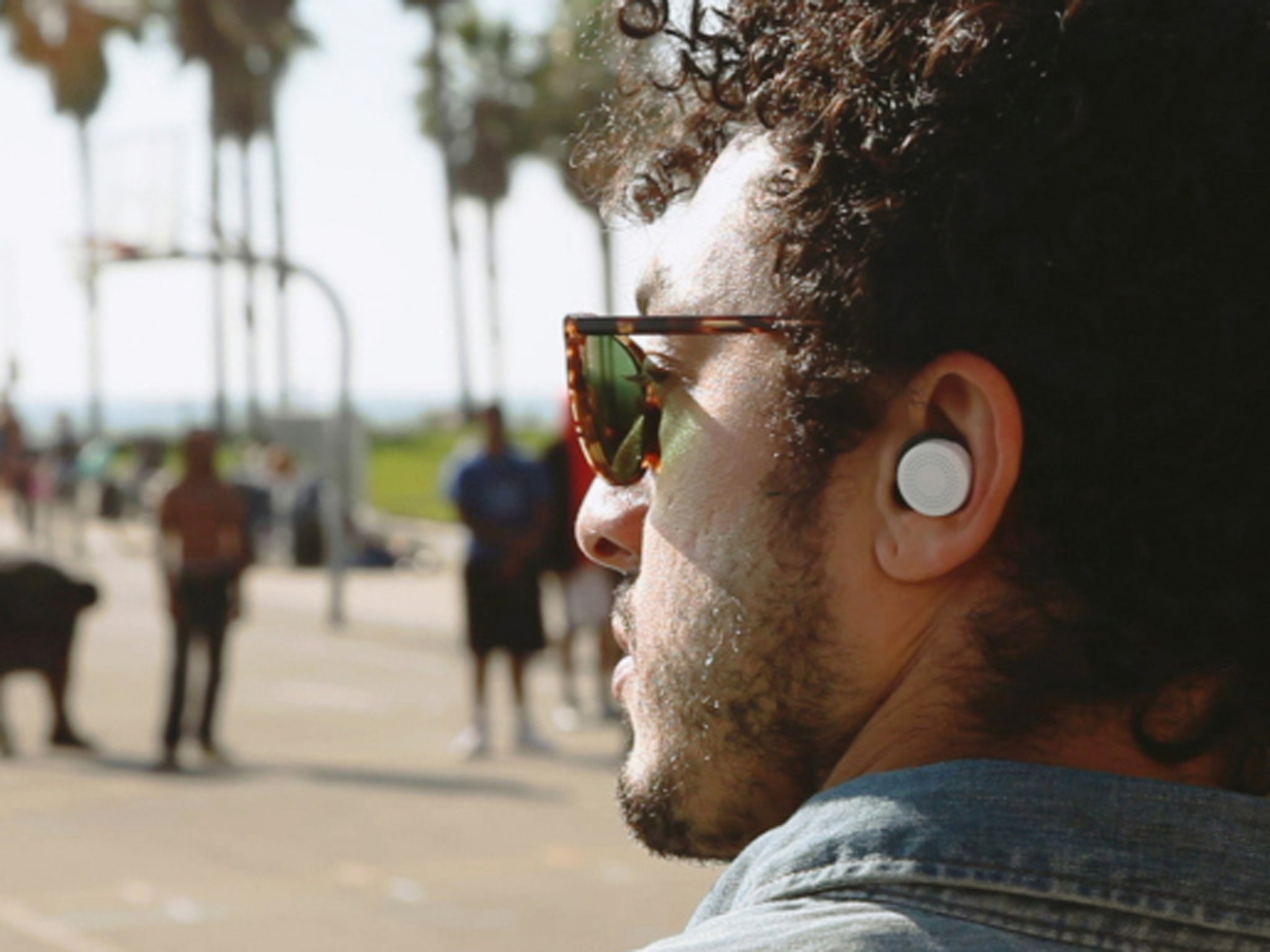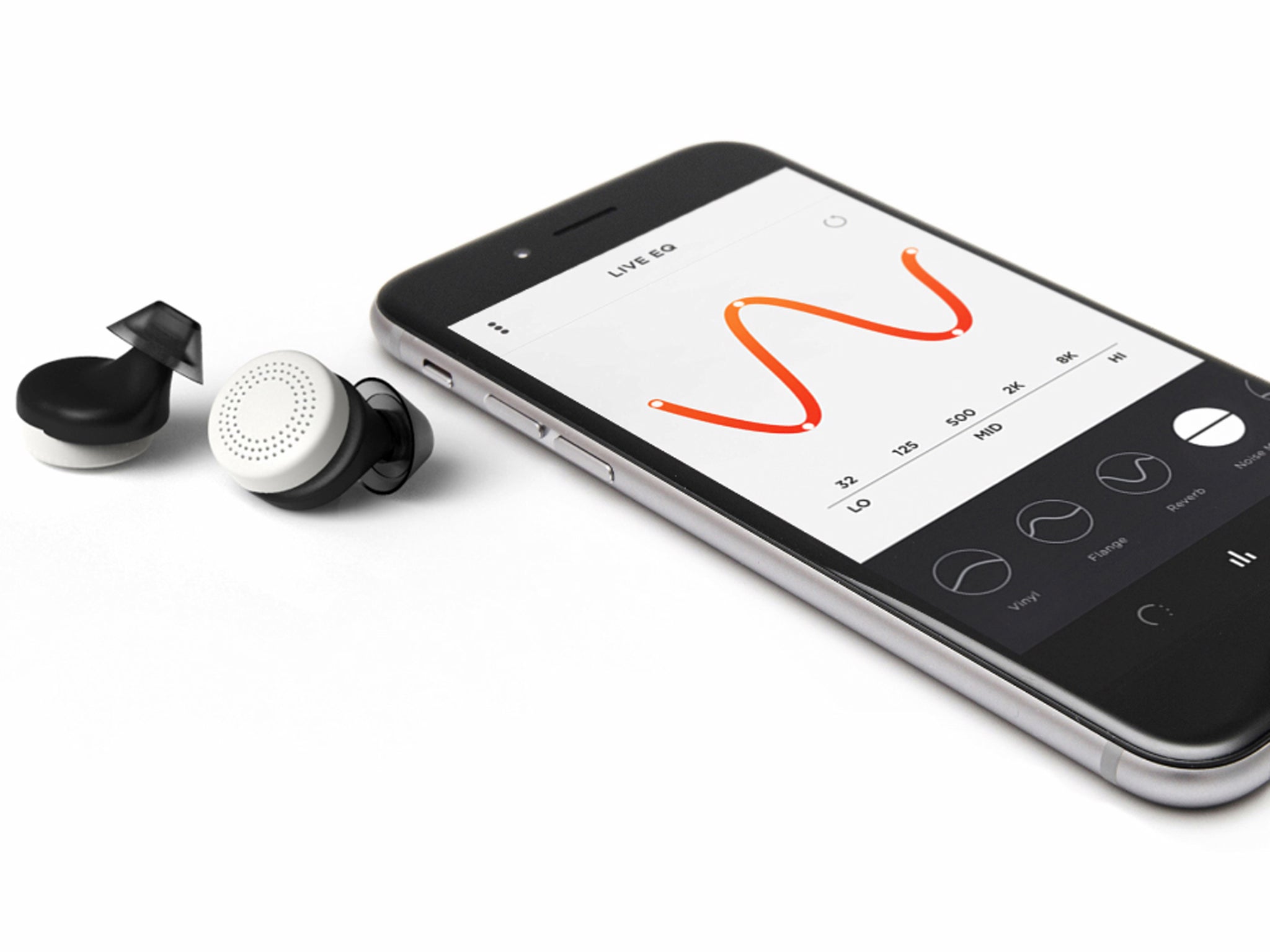Wearable technology: Augmented hearing buds 'Here Active Listening' could be the biggest thing to hit live music since electric amplification
“Here” are oversized earbuds about the size of a 10-pence piece that are meant to give you control over live sounds

Our eyes may have lost out when Google Glass proved to be about as useful as a Segway, and almost as embarrassing to own. But these days, the most likely body part to get upgraded by mass-market technology is our ears.
Before the end of the year, the US start-up Doppler Labs plans to come out with a promising product called “Here”, oversized earbuds about the size of a 10-pence piece that are meant to give you control over live sounds. They don’t play Spotify songs; instead, they filter and alter the thrum of the real world around you. The early versions will have volume control and some noise cancellation. One setting is “Baby Suppress”, meant to squash the sound of the crying kid behind you on a cross-country flight.
Augmented hearing buds could be the biggest thing to hit live music since electric amplification, which changed the very nature of music, from orchestras and big bands to small combos playing through microphones and amps. Once everyone in a venue is wearing augmented ears, artists will be able to rethink the way the music gets to our brains. Maybe every member of the band will play in a different corner of the room, allowing audience members to wander from one musician to the other, seeing the performance intimately while still hearing the sound all perfectly mixed together.

“Our hope is that Here will open up a new paradigm for the concert experience and for live listening,” Noah Kraft, the chief executive of Doppler, told Rolling Stone. Doppler and others working on augmented hearing don’t plan to stop at music. Doppler has a vision for “a computer, speaker and microphone in every ear”, a nod to Microsoft’s old goal of a computer on every desk, and predicts that in 10 years, people will wear these 24 hours a day.
While Doppler seems furthest along, it’s not alone in chasing these ideas. You can already buy sound-augmenting apps that use your smartphone as the mic and filter, pushing the altered sounds to your earbuds or headphones.
Advances are being made in the field of more traditional hearing aids. Scientists say the “cocktail-party problem” of distinguishing between different voices talking at once has been solved. American researchers have created, using 3D printing, a replica of our complex inner ear. The device can isolate and identify three voices with 97 per cent accuracy, reports the journal Proceedings of the National Academy of Sciences.
One brilliant aspect of augmented ears is that a huge chunk of the population already wear things in their ears. An ageing but still vain demographic that needs help hearing but won’t wear a “hearing aid” (estimates are that only one-fifth of people who need hearing aids use one) would more likely sport earbuds that do much of the same work.
Beyond Doppler’s vision, some of the propositions for augmented hearing get pretty wild. Once you have a computer in your ear, it could do a lot of things your ears could never do. One idea is instant translation. Automated language translation is getting better all the time. Combine that with a sound processor and it could catch Chinese coming in and send English into your ears. Language barriers would disappear – and with them, maybe any need to teach foreign languages.

Another idea is to allow us to hear wavelengths never meant for our ears. Colour is a wavelength we see but can’t hear, but what if you could hear green? Imagine the impact on the colour-blind. Or what if you could hear infrared, essentially letting you see in the dark through your ears?
This stuff is likely to happen. Though, sadly, the genuinely wearable solution to the cocktail-party problem may be a way off – so far, the model is 40cm in diameter, bigger than a human head. Still, it could make a good ice-breaker.
(c) Newsweek
Join our commenting forum
Join thought-provoking conversations, follow other Independent readers and see their replies
Comments